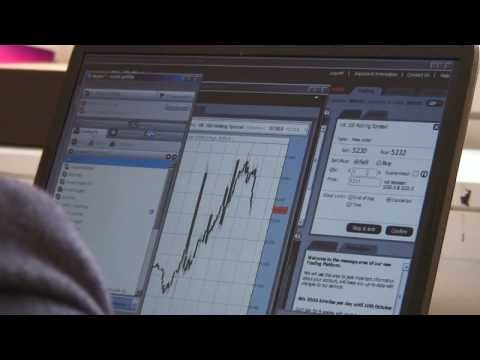Introduction To AssetBacked And MortgageBacked Securities Yahoo India Finance
Post on: 4 Июнь, 2015 No Comment

Asset-backed securities (ABS) and mortgage-backed securities (MBS) are two important types of asset classes. MBS are securities created from the pooling of mortgages, and then sold to interested investors. whereas ABS have evolved out of MBS and are created from the pooling of non-mortgage assets. These are usually backed by credit card receivables, home equity loans, student loans and auto loans. The ABS market was developed in the 1980s and has become increasingly important to the U.S. debt market. In this article, we will go through the structure, some examples of ABS and valuation.
Structure
There are three parties involved in the structure of ABS and MBS: the seller, the issuer and the investor. Sellers are the companies that generate loans and sell them to issuers. They also take the responsibility of acting as the servicer, collecting principal and interest payments from borrowers. Issuers buy loans from sellers and pool them together to issue ABS or MBS to investors. They can be a third-party company or special-purpose vehicle (SPV). ABS and MBS benefit sellers because they can be removed from the balance sheet, allowing sellers to acquire additional funding. Investors of ABS and MBS are usually institutional investors and they use ABS and MBS to obtain higher yields than government bonds, as well as to provide a way to diversify their portfolios.
Both ABS and MBS have prepayment risks, though these are especially pronounced for MBS. Prepayment risk is the risk of borrowers paying more than their required monthly payments, thereby reducing the interest of the loan. Prepayment risk can be determined by many factors, such as the current and issued mortgage rate difference, housing turnover and path of mortgage rate. If the current mortgage rate is lower than the rate when the mortgage was issued or housing turnover is high, it will lead to higher prepayment risk. The path of the mortgage rate might be difficult to understand, so we will explain with an example. A mortgage pool begins with a mortgage rate of 9%, then drops to 4%, rises to 10% and finally falls to 5%. Most homeowners would refinance their mortgages the first time the rates dropped, if they are aware of the information and are capable of doing so. Therefore, when the mortgage rate falls again, refinancing and prepayment would be much lower compared to the first time. Prepayment risk is an important concept to consider in ABS and MBS. Therefore, to deal with prepayment risk, they have tranching structures, which help by distributing prepayment risk among tranches. Investors can choose which tranche to invest based on their own preferences and risk tolerance.
One additional type of risk involved in ABS is credit risk. ABS have a senior-subordinate structure to deal with credit risk called credit tranching. The subordinate or junior tranches will absorb all of the losses, up to their value before senior tranches begin to experience losses. Subordinate tranches typically have higher yields than senior tranches, due to the higher risk incurred. Investors can choose which one they want to invest in according to their risk tolerance and their outlook on the market.
Examples of ABS
There are many types of ABS, each with different characteristics and cash flows, thus making the valuation different as well. Below are some of the most common ABS types:
Home Equity ABS
Home equity loans are very similar to mortgages, which makes home equity ABS similar to MBS. The major difference between home equity loans and mortgages is that the borrowers of a home equity loan usually doesn’t have good credit ratings, hence they are not able to get mortgages. Therefore, investors and analysts need to take a look into the borrowers’ credit when analyzing home equity loan -backed ABS.
Auto Loan ABS
Auto loans are a type of amortizing asset. Therefore, the cash flows of auto loan ABS include monthly interest, principal payment and prepayment. Prepayment risk for auto loan ABS is much lower when compared to home equity loan ABS or MBS. Prepayment only happens when the borrower has extra funds to pay the loan off. Refinancing rarely happen when the interest rate drops. That is because cars depreciate faster than the loan balance, resulting in the collateral value of the car being less than the outstanding balance. Also, the balances of these loans are normally small and borrowers won’t be able to save much from refinancing based on a lower interest rate, so there is little incentive to refinance.
Credit Card Receivable ABS

Credit card receivable ABS are a type of non-amortizing asset ABS. They don’t have scheduled payment amounts and the composition of the pool can be changed and new loans can be added.
The cash flows of credit card receivable ABS includes interest, principal payments and annual fees. There is usually a lock-up period for credit card receivable ABS during which no principal will be paid. If the principal is paid within the lock-up period, new loans will be added to the ABS with the principal payment that makes the pool of credit card receivables unchanged. After the lock-up period, the principal payment would be passed on to ABS investors.
Valuation
It is important to measure the spread and pricing of bond securities and know which type of spread should be used for different types of ABS and MBS for investors. If the security doesn’t have embedded options that are typically exercised, such as call, put or certain prepayment options, the zero-volatility spread (Z-spread) can be used to measure them. The Z-spread is the constant spread that makes the price of a security equal to the present value of its cash flow when added to each Treasury spot rate. For example, we can use the Z-spread to measure credit card ABS and auto loan ABS. Credit card ABS don’t have any options, hence the Z-spread is appropriate. Although auto loan ABS do have prepayment options, they’re not typically exercised, as discussed above, thus it is possible to use the Z-spread to measure them.
If the security has embedded options, then we need to use the option adjusted spread (OAS). The OAS is the spread adjusted for the embedded options. There are two ways to derive the OAS. One way is from the binomial model which can be used if cash flows depend on current interest rates but not on the path that led to the current interest rate. For example, callable and putable bonds are not interest rate path dependent therefore we can use the OAS derived from the binomial model. The other way to derive the OAS is through the Monte Carlo model which is more complicated and needs to be used when the cash flow of the security is interest rate path dependent. MBS and Home Equity ABS are types of interest rate path-dependent securities, thus we need to derive OAS from the Monte Carlo model to value them.
Asset-backed and mortgage-backed securities are complicated in terms of their structures, characteristics and valuations. Investors who want to invest in these securities can buy into indexes, such as the U.S. ABS index. If you want to invest in ABS or MBS directly, makes sure you do a good deal of research, be confident of what you are doing and make sure your investment matches your risk tolerance .
More From Investopedia














